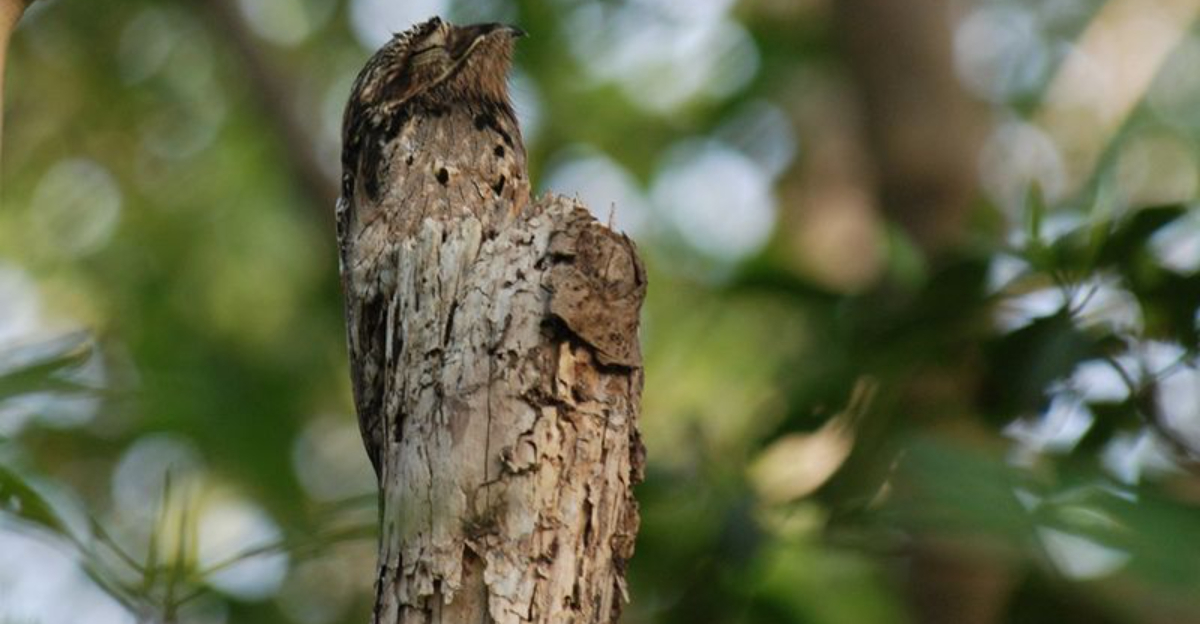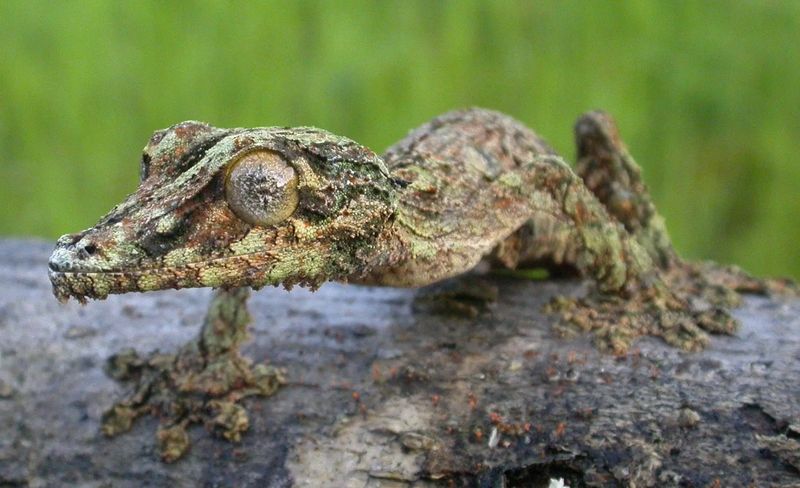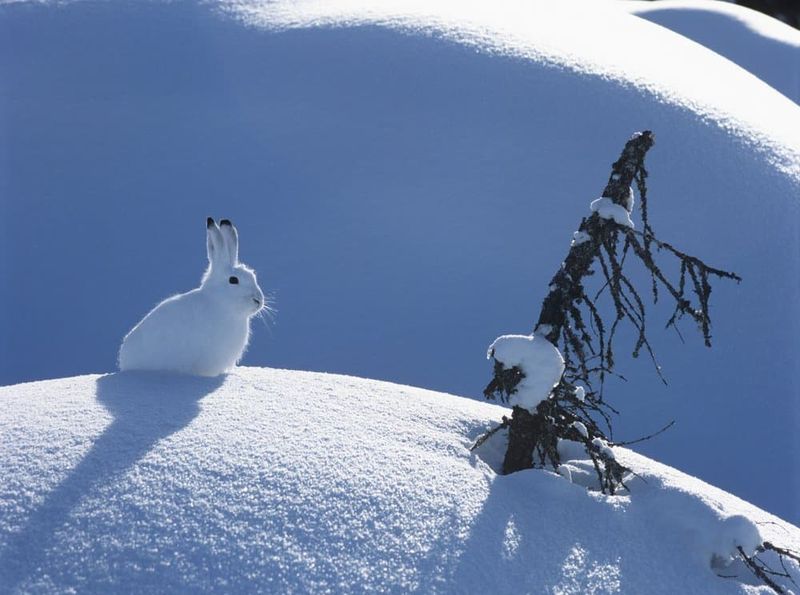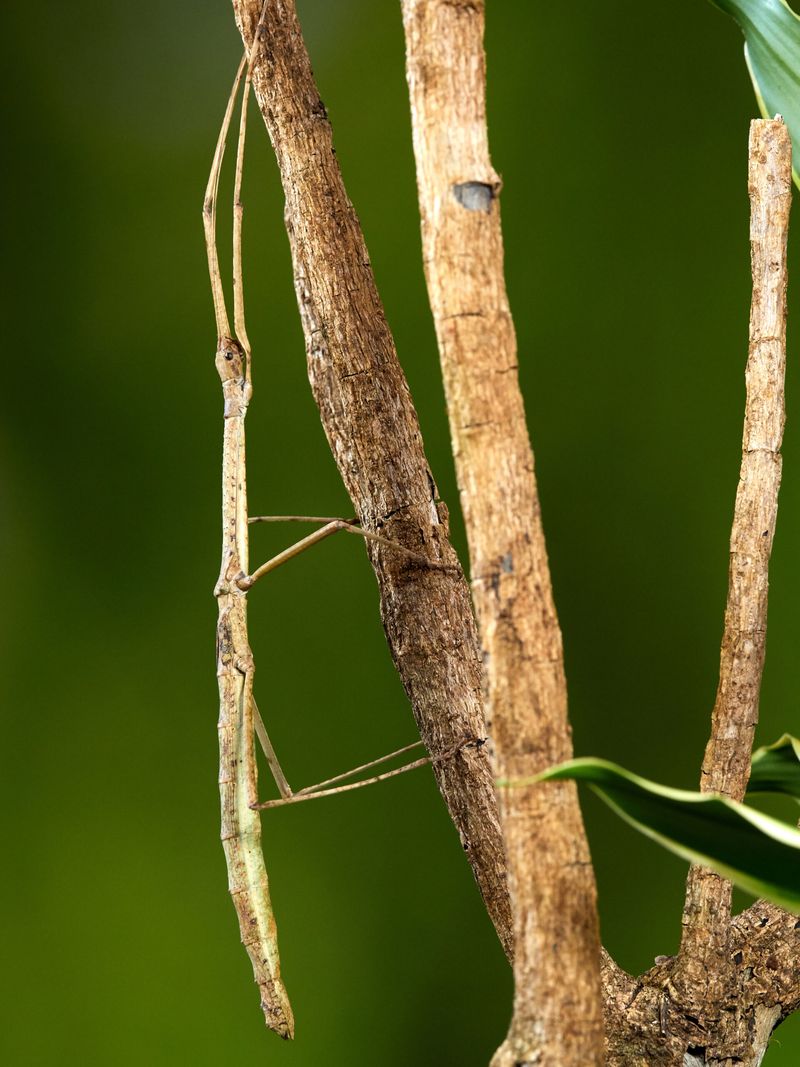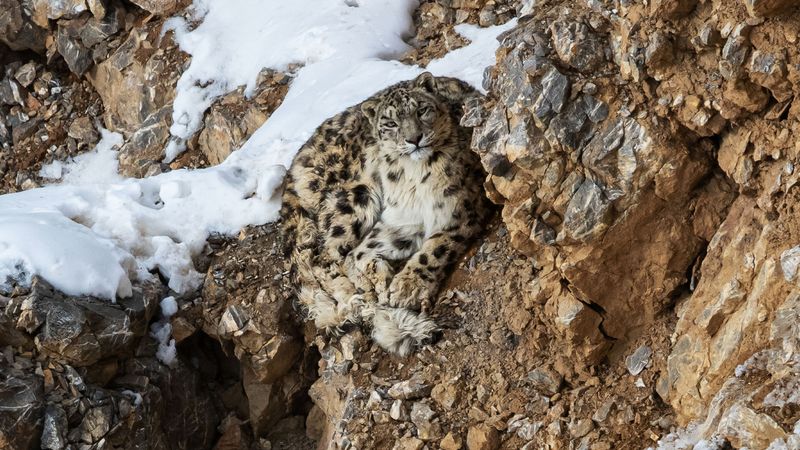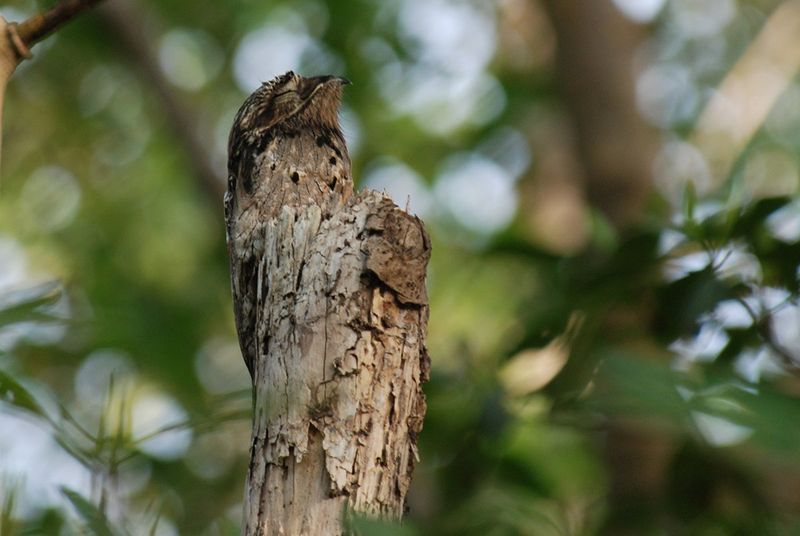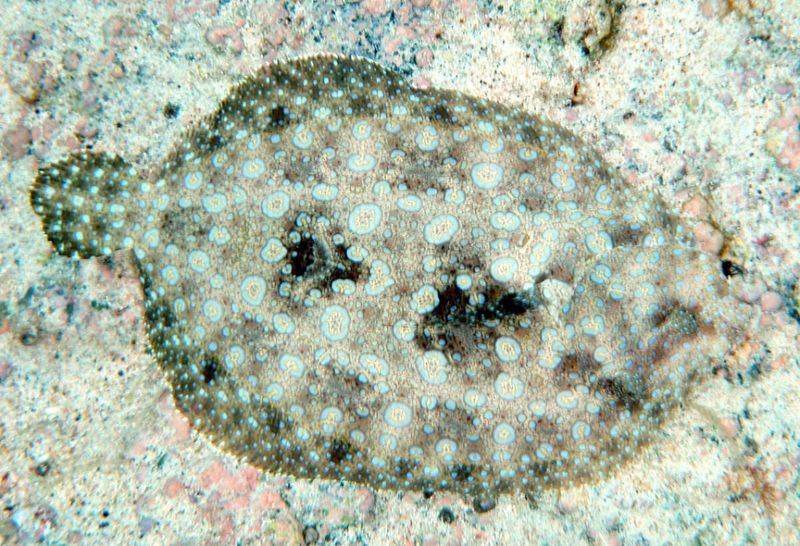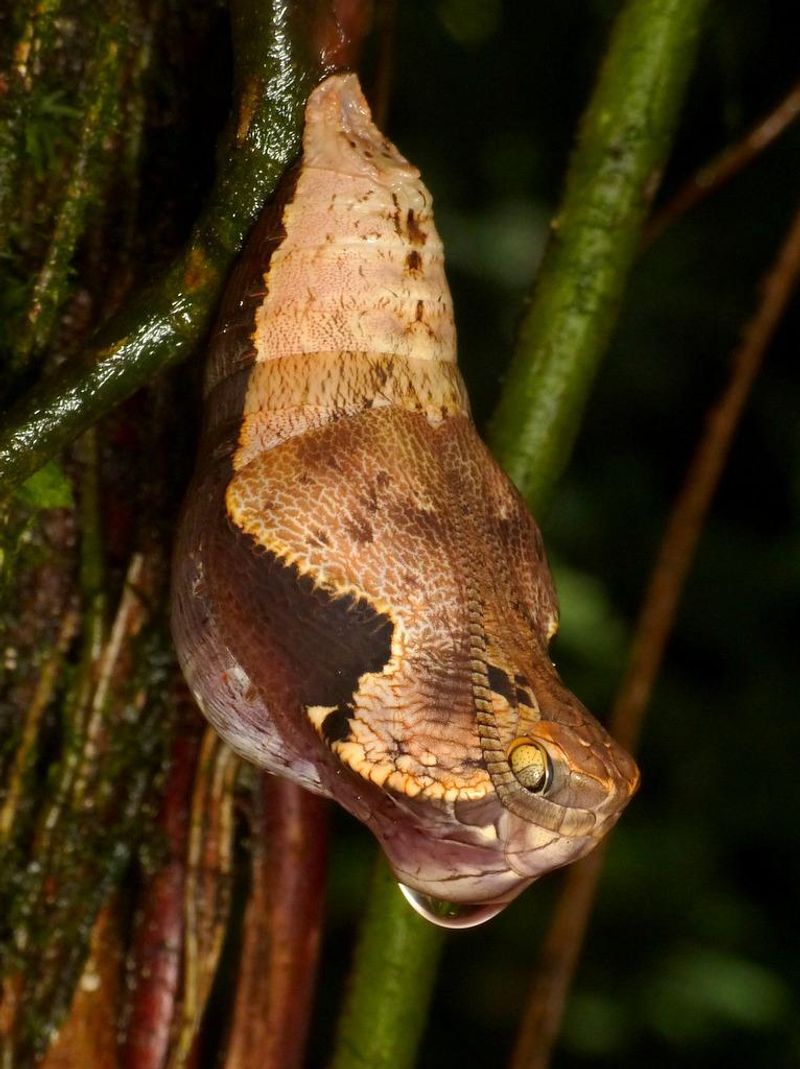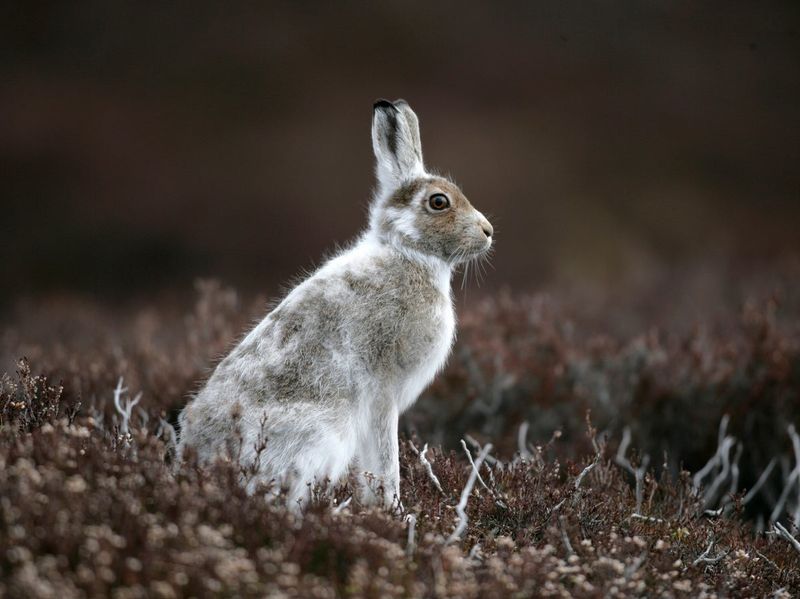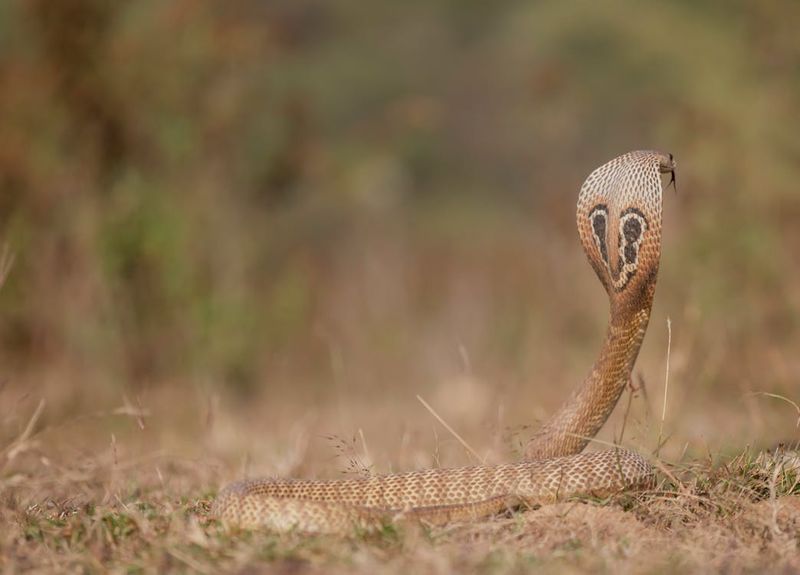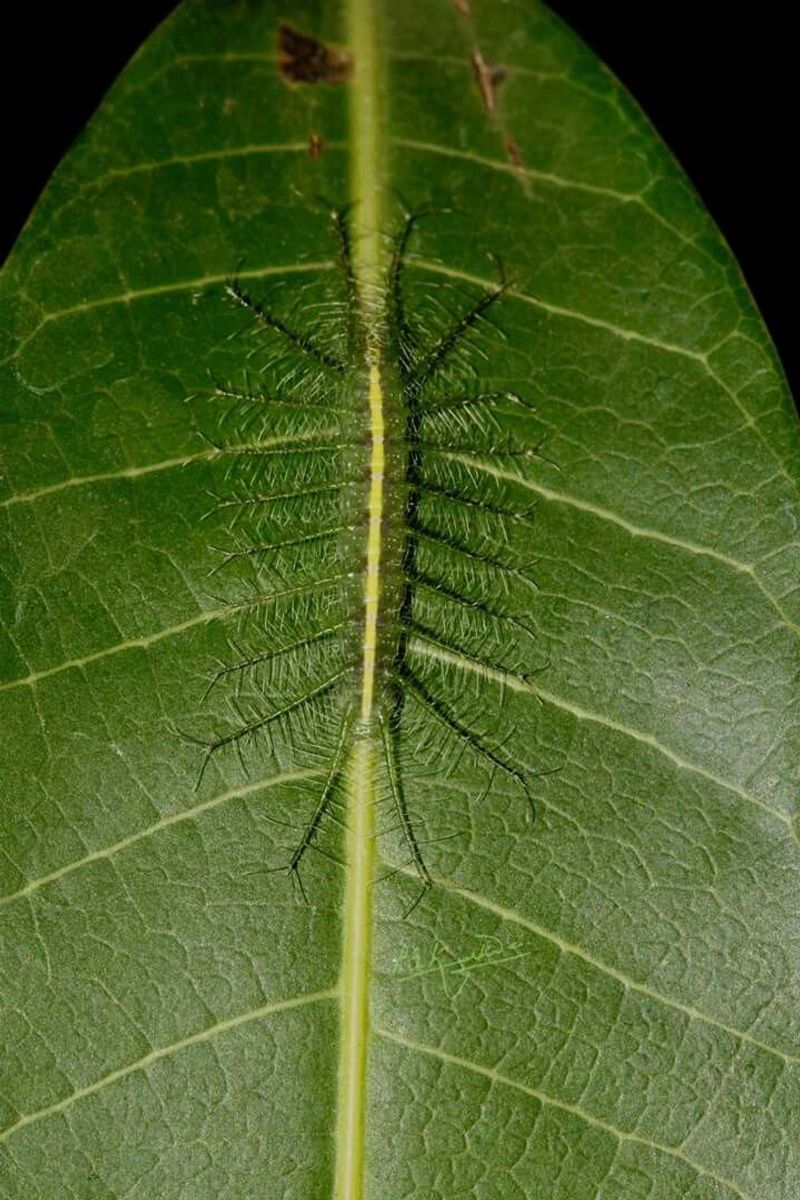Camouflage is one of nature’s most brilliant survival tools. Whether it’s for hiding from predators or sneaking up on prey, these 13 animals have perfected the art of blending in with their surroundings.
Leaf-Tailed Gecko
These reptiles, found in Madagascar, are masters of disguise with their uncanny resemblance to dead leaves. Their bodies display intricate vein patterns and notches, mimicking the dead foliage with astonishing accuracy. If you were to stroll through a Madagascan rainforest, you might miss them entirely.
What’s more fascinating is their ability to flatten their bodies against tree bark, becoming nearly invisible. The resemblance is not just superficial, as these geckos exhibit color variations similar to leaves in different stages of decay. A true marvel of evolution, they embody the essence of stealth and surprise.
Their adaptation serves a dual purpose: eluding predators and ambushing prey, making them a perfect example of nature’s ingenuity.
Arctic Hare
In the frozen expanse of the Arctic, the Arctic hare becomes a ghostly apparition against the snow. With fur that turns pristine white in the winter, it seamlessly melds into the icy landscape, offering an effective camouflage from predators.
As the seasons change, so does the hare’s coat. In summer, the white fades to a brownish hue, matching the earthy tones of the tundra. This seasonal adaptability ensures its survival year-round, highlighting nature’s remarkable ability to adapt.
The Arctic hare’s transformation is not just about color; it’s a tale of survival, a testament to nature’s resilience in extreme conditions.
Cuttlefish
Dubbed the “chameleons of the sea,” cuttlefish are unmatched in their ability to alter appearance. Beneath the ocean’s surface, these marine wonders can instantaneously change color, texture, and even patterns to blend with their surroundings.
Whether mimicking the granular surface of a rock or the vibrant hues of coral, their capability is truly mesmerizing. The cuttlefish’s skin contains specialized cells called chromatophores that allow such dramatic transformations, a feature that not only aids in hiding but also in communication and mating.
Their versatility in appearance is a dance of survival, an intricate performance that leaves both predators and prey mystified.
Stick Insect
In the world of insects, stick insects reign supreme in the art of disguise. With bodies that bear a striking resemblance to twigs or branches, these insects have honed their mimicry over millennia. Swaying gently as if moved by the breeze, they can fool both predators and passersby with their convincing act.
The illusion is so complete that even experienced eyes might overlook them. Their survival hinges on this deception, allowing them to remain hidden in plain sight, away from bird beaks and other dangers.
For those interested in spotting them, a keen eye and a patient heart are essential, as their presence is often felt rather than seen.
Snow Leopard
With an ethereal grace, the snow leopard is a nebulous specter of the Asian highlands. Its smoky-grey coat, adorned with dark rosettes, mirrors the rocky, snow-dotted landscape of its mountainous habitat.
This natural camouflage is a masterpiece of evolution, enabling the snow leopard to stalk its prey undetected or to hide from human eyes. Their elusive nature is further amplified by their solitary lifestyle, making sightings rare and precious.
For conservationists and wildlife enthusiasts, encountering a snow leopard is akin to finding a unicorn, a rare glimpse into the beauty of nature’s secrets.
Leafy Sea Dragon
In the underwater realm, the leafy sea dragon is a sight to behold. Resembling a piece of floating seaweed, this relative of the seahorse has perfected its disguise with leaf-like appendages that sway with the ocean currents.
Floating amidst kelp forests, it is nearly indistinguishable from the marine flora. This camouflage not only protects it from predators but also allows it to ambush unsuspecting prey.
The leafy sea dragon’s unique appearance is both a defensive mechanism and an artistic expression of nature’s creativity, captivating divers and marine biologists alike.
Potoo Bird
In the daylight, the Potoo bird becomes a part of the forest landscape. With plumage that mirrors the texture and color of tree bark, these nocturnal avians are experts in remaining unseen.
During the day, they perch motionless on tree stumps, adopting a pose that makes them look like nothing more than a broken branch. This stillness is their defense, allowing them to evade predators as they sleep.
Their hauntingly large eyes, though closed during the day, open wide at nightfall, transforming them into vigilant hunters under the moonlit sky.
Flounder
A master of disguise on the ocean floor, the flounder is a flatfish with an uncanny ability to blend into its environment. By altering its skin pattern and color, it becomes almost indistinguishable from the seabed below.
This adaptation is crucial for survival, as it hides from predators and sneaks up on prey. The flounder’s eyes, positioned on one side of its body, provide a unique perspective, allowing it to remain vigilant.
For divers and marine enthusiasts, spotting a flounder is a game of hide and seek in the vastness of the ocean’s depths.
Owl Butterfly Caterpillar
In the lush tropics, the owl butterfly caterpillar employs an ingenious form of mimicry. Resembling a snake’s head when threatened, it boasts eye spots that deter predators.
This clever disguise is a survival tactic, as many predators shy away from attacking snakes. The caterpillar’s ability to morph its appearance is a reminder of the diverse strategies nature employs to defend its creations.
Upon metamorphosis, it becomes the owl butterfly, continuing its life cycle with equally fascinating wing patterns, transforming from a master of deception to a marvel of beauty.
Mountain Hare
High in the northern reaches, the mountain hare is a creature of seasonal change. Like its Arctic cousin, it dons a snow-white coat in winter to disappear against snowy backdrops.
As the thaw comes, the hare’s fur transitions to a brownish-grey, matching the summer landscape of rocks and meadows. This color shift is essential for survival, a natural cloak that keeps it hidden from eagle eyes above.
The mountain hare’s adaptability is a testament to the ever-shifting dance of life, where blending in is key to thriving in harsh environments.
Dead Leaf Mantis
In the world of mantids, the dead leaf mantis is a remarkable performer. With a body that echoes the appearance of a curled, dead leaf, it is an expert in deception. This mimicry is so convincing that even the most observant predator might be fooled.
By staying still and occasionally rocking gently, it mimics the subtle movements of foliage in the wind.
This behavior not only aids in evasion but also in ambushing prey, showcasing nature’s knack for combining beauty with functionality.
Indian Cobra
The Indian cobra is a snake of subtle elegance, its scales mimicking the earthy tones of leaves and forest floor textures. When coiled amidst the undergrowth, it becomes a shadow, hard to detect by both predator and prey.
This camouflage provides essential protection, allowing it to strike with precision when hunting. The cobra’s presence is often announced by its iconic hood display, a warning that echoes through the forest.
While feared, the Indian cobra is also revered, a symbol of power and mystery in many cultures, embodying the duality of danger and beauty.
Common Baron Caterpillar
Among the leaves of mango trees, the common baron caterpillar lies in wait. Its body’s coloration and ridges are so well-matched to the leaves that predators often pass by without notice.
This camouflage is its primary defense, allowing it to grow and eventually transform into a butterfly. The caterpillar’s ability to blend in is a lesson in patience and persistence, a slow but sure path to metamorphosis.
For nature enthusiasts, spotting this caterpillar is a rewarding challenge, a glimpse into the subtle artistry of nature’s protective strategies.
